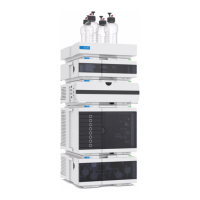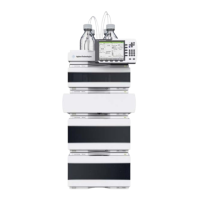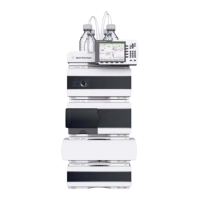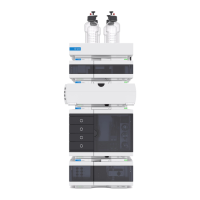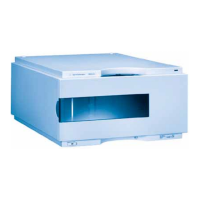1290 Infinity Quaternary Pump User Manual 87
Using the Module
4
Solvent Recommendation for Agilent 1290 Infinity and 1290 Infinity II and 1260 Infinity II Flexible Pumps
Handling of Buffers
The following recommendations should be observed when using buffer
solutions:
• Buffers and aqueous solutions are possible sources of algae contamination,
for avoiding related problems, please read “Algae Growth in HPLC
Systems” on page 89.
• For buffer concentrations of 0.1 M or higher using the seal wash function
periodically with a runtime of 0.3 min every 3 min is strongly
recommended.
• Filter buffer solutions to avoid increased wear or blockages that are caused
by undissolved crystals. Always use solvent inlet filters.
• Avoid conditions where mixing of buffers and organic solvents may cause
precipitation, as this impairs the reproducibility of chromatographic
experiments and may also reduce the system life time. For example in
reversed phase chromatography, avoid buffers (especially phosphate
buffers) with a concentration higher than 20 mmol/L. For phosphate
buffers, avoid compositions containing more than 65 % acetonitrile or other
organic solvents.
• When installing tubing connections to the MCGV, use lower channels (A/D)
for aqueous solvents and upper channels for organic solvents. This will
re-dissolve precipitates more easily.
• Consider using an inline filter, for example Inline Filter Assembly
(5067-5407).
• Never leave buffers in a system without flow. Before shutting down a
system, flush it extensively with warm water to avoid clogging of valves,
capillaries, or flow cells or reducing the life time of your column. If the
system is not used for some time, for example more than a day depending
on lab temperature, fill all solvent lines with organic solvent or water with
at least 10 % isopropanol.
• Regularly maintain the LC system.
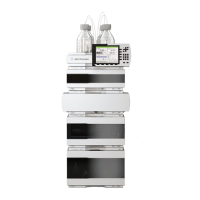
